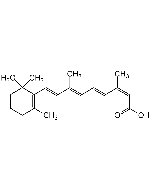Cookie Policy: This site uses cookies to improve your experience. You can find out more about our use of cookies in our Privacy Policy. By continuing to browse this site you agree to our use of cookies.
Innaxon
Retinoic Acid Lipodisq™ Sterile Solution
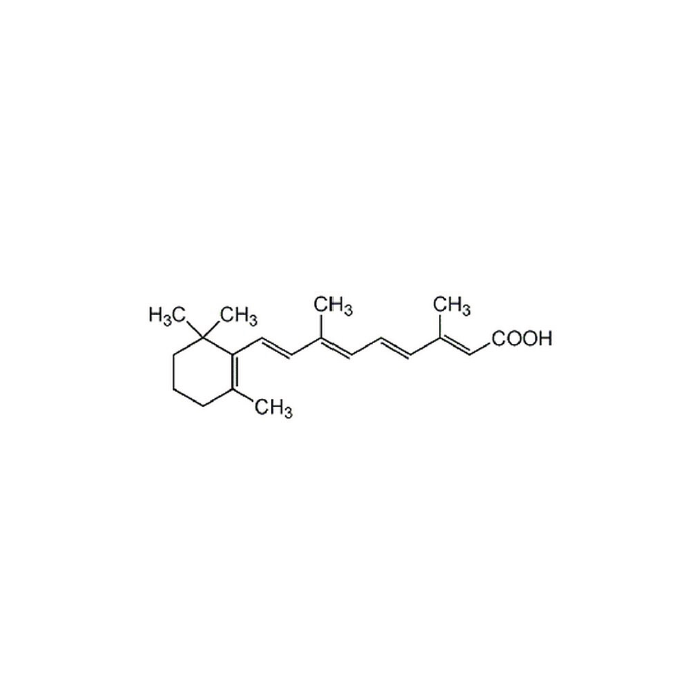
| Product Details | |
|---|---|
| Synonyms | Tretinoin; all-trans-Retinoic acid (ATRA); Vitamin A acid in a detergent-free nano-formulation made of styrenemaleic acid lipid particles (SMA-Lipid Particles) |
| Product Type | Chemical |
| Properties | |
| Formula |
C20H28O2 |
| MW | 300.44 |
| CAS | 302-79-4 |
| RTECS | CZ8987000 |
| Purity Chemicals | ≥95% (HPLC) |
| Appearance | Colourless clear aqueous solution |
| Solubility | Soluble in water, PBS, Tris and other physiological solutions as formulated in a proprietary, thermostable, aqueous lipid nanoparticulate formulation (Lipodisq). |
| Reconstitution | Avoid the use of buffers with divalent ions such as Ca or Mg or pH <6.5 or >8.0, which can cause particle instability. Unformulated retinoic acid is soluble in chloroform, DMSO or ethanol.. |
| Formulation | Liquid, detergent-free discoidal nano-formulation made of styrene-maleic acid lipid particles (SMALP), lecithin and sterile water. |
| Concentration | 1mg/ml (0.1% w/vol) |
| Biological Activity |
Discoidal nano-particles can incorporate hydrophobic, poorly water-soluble compounds, such as lipids, lipoproteins and glycolipids.- Cell culture tested (human macrophage cell line) (MTT). - Recommended starting dilution: 1:200 or higher. - Optimal working concentrations depend on the applications and need to be determined. - Published procedures using Lipodisq formulations (Curcumin and IAXO TLR4 antagonists) in vivo rodent models at 3-10mg/kg. Recommended route of administration is subcutaneous (s.c.) with oral or nasal application as a possible alternative, which needs to be optimized. |
| Declaration | Manufactured by Innaxon. |
| Other Product Data |
Click here for Original Manufacturer Product Datasheet: Our product description may differ slightly from the original manufacturers product datasheet.
|
| InChi Key | SHGAZHPCJJPHSC-YCNIQYBTSA-N |
| Smiles | CC1(C)C(/C=C/C(C)=C/C=C/C(C)=C/C(O)=O)=C(C)CCC1 |
| Shipping and Handling | |
| Shipping | AMBIENT |
| Short Term Storage | +4°C |
| Long Term Storage | +4°C |
| Handling Advice |
Keep sterile. Protect from light. Avoid skin and eye contact. |
| Use/Stability | Stable for at least 1 year after receipt when stored at +4°C. |
| Documents | |
| Product Specification Sheet | |
| Datasheet |
 Download PDF Download PDF |
- Vitamin A is a fat-soluble micronutrient necessary for the growth of healthy skin and hair. However, both too little and too much vitamin A has deleterious effects. All-transretinoic acid (ATRA) and retinal are the main active metabolites of vitamin A. Retinoic acid dose-dependently regulates hair follicle stem cells, influencing the functioning of the hair cycle, wound healing, and melanocyte stem cells. Retinoic acid also influences melanocyte differentiation and proliferation in a dose-dependent and temporal manner. Levels of retinoids decline when exposed to ultraviolet irradiation in the skin.
- All-trans-retinoic acid (ATRA) is effective for preventing cancer and treating skin diseases and acute promyelocytic leukaemia (APL). These pharmacological effects of ATRA are mainly mediated by retinoid X receptors (RXRs) and retinoic acid receptors (RARs). These included two families of receptors, the RAR isotypes (a,b, and g) along with three RXR isotypes (a,b, and g), which bind as RXR/RAR heterodimers to cis-acting response elements of RA target genes to generate a high degree of complexity.
- Retinoic acid is used in the treatment of psoriasis, ichthyosis, follicular keratosis, acne, lichen planus, verrucous epidermal nevus, impetigo, vitiligo, lichen psoriasis, the face of pityriasis alba.
- Vitamin A in Skin and Hair: An Update. VanBuren CA and Everts HB. Nutrients. (2022); 14:2952
- Overview of all-trans-retinoic acid (ATRA) and its analogues: Structures, activities, and mechanisms in acute promyelocytic leukaemia. LiangC, et al. Eur J Med Chem. (2021); 220:113451






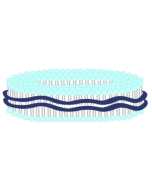
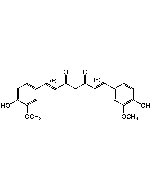
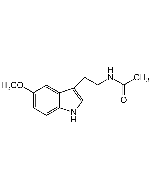

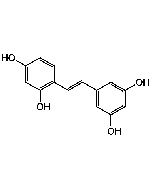
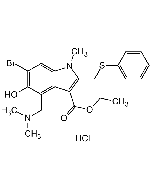
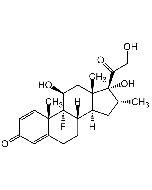
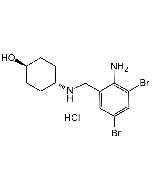
![PBS Endotoxin-free (sterile) [For Nano-formulated Drug Analysis]](https://update.adipogen.com/media/catalog/product/placeholder/default/adipogen_logo_bw_3.png)

